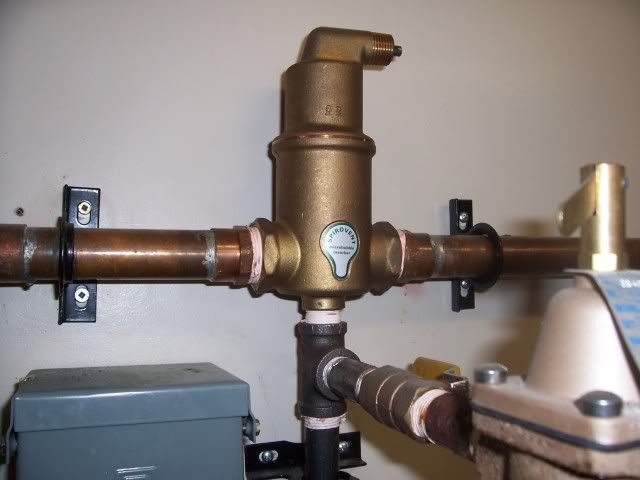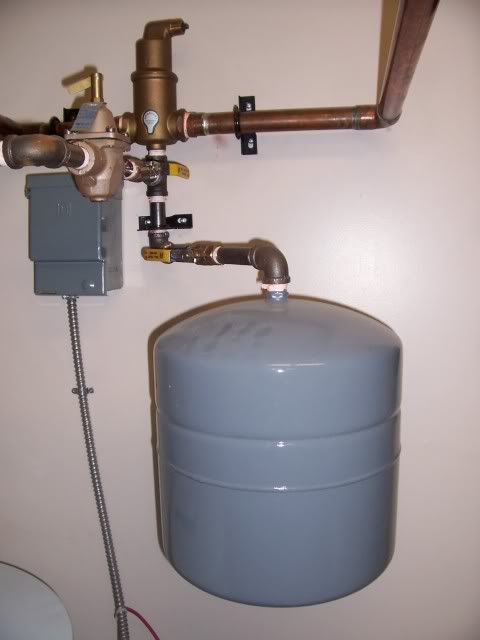I have a problem with my base board heating system that has driven me nuts for years. During the heating season I have to bleed air out of the system three or four times or the banging and grueling will have me go Postal. The system is a closed loop, boiler > pipes > radiators > pipes > circulation pump > boiler. I have pressure checked the system several times, no leaks. At the highest point in the system there is positive pressure above atmospheric, hence no way air can leak in. So where is the air coming from?
My thinking has evolved to the point that air is being drawn in at the suction side of the pump. The water is not in motion, weighing maybe 100 -150 pounds. When the circulator pump starts, the water is at rest and its at-rest inertia will not allow it to accelerate instantly causing the suction side of the pump to briefly fall below atmospheric pressure.
For this brief time, a wee amount of air is drawn in around the pump drive shaft seals and eventually gets larger. Now you would expect that the expansion tank would compensate for the pressure drop, but the expansion tank is on the output side of the boiler under pressure. I would think that a second tank on the input/suction side of the water pump would compensate, acting as a shock absorber for the sudden pressure drop in the suction line? Or only one expansion tank is needed at the suction side of the pump?
Every hydronic heating system I have seen has the expansion tank on the output side of the boiler, why?
My thinking has evolved to the point that air is being drawn in at the suction side of the pump. The water is not in motion, weighing maybe 100 -150 pounds. When the circulator pump starts, the water is at rest and its at-rest inertia will not allow it to accelerate instantly causing the suction side of the pump to briefly fall below atmospheric pressure.
For this brief time, a wee amount of air is drawn in around the pump drive shaft seals and eventually gets larger. Now you would expect that the expansion tank would compensate for the pressure drop, but the expansion tank is on the output side of the boiler under pressure. I would think that a second tank on the input/suction side of the water pump would compensate, acting as a shock absorber for the sudden pressure drop in the suction line? Or only one expansion tank is needed at the suction side of the pump?
Every hydronic heating system I have seen has the expansion tank on the output side of the boiler, why?

